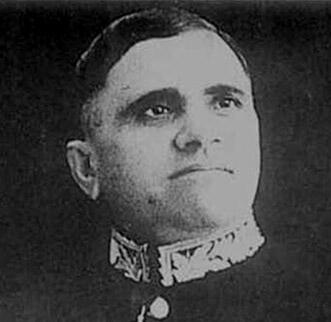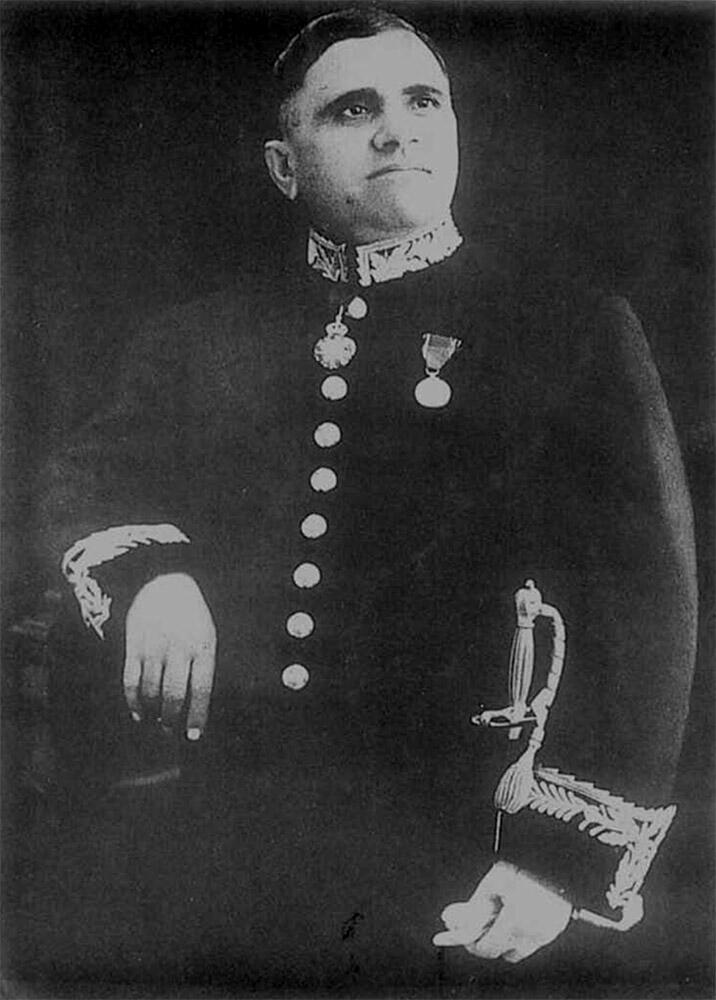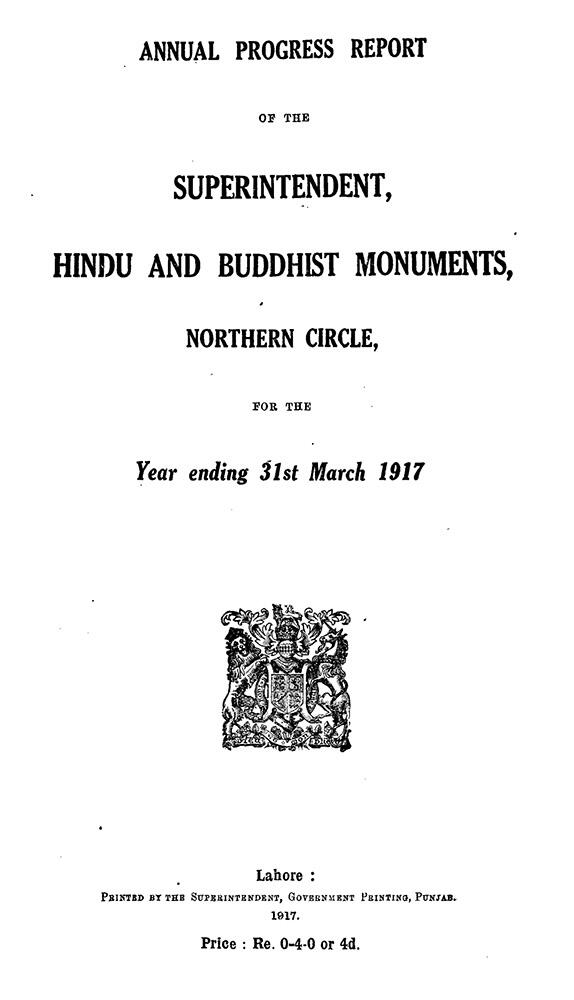Rai Bahadur Daya Ram Sahni [1879-1939), born in Bhera, Sarghoda District, Punjab was a pivotal figure in the discovery of Harappa, familiar with the mysterious seals and earlier visits to the site. It was Sahni who, after a 3-day visit in February 1917, took up Hargreaves suggestion that the promising mounds be purchased from the owners and determined that the site was worthy of renewed and deeper excavations.
In the two pieces below, from the 1917 and later in the 1920 ASI Reports, Daya Ram Sahni explains explain his thinking as he undertook preliminary investigations, the first after "I inspected the ancient site near Harappa in the Montgomery District on 20th-22nd February 1917" as Superintendent Archaeologist with the Archaeological Survey of India [ASI]:
EXPLORATION 1.–PUNJAB.
"Harappa, District Montgomery.—The ancient remains of Harappa in the Montgomery District are one of the most ancient and extensive city sites in the Punjab, but unfortunately they continue to be used as a quarry for building materials up till now. I hope to shortly approach the Government with a proposal for declaring these ruins as a protected monument in the terms of the Ancient Monuments Preservation Act. For this purpose a site plan of the mounds is being prepared and will be submitted with my proposal. It should be observed here that this ancient city must have originally extended far beyond the limits of the mounds that now survive on the site, for I was able to trace foundations of ancient buildings for considerable distances all round the place. The principal interest of these remains centres in the fact that they have yielded about half a dozen miniature tablets bearing inscriptions in an unknown script which has not yet been deciphered. Systematic explorations may yield more records in these characters and may thus provide a clue to their true nature and the interpretation of these curious epigraphs."
In the longer piece below written just before Sahni's official excavations began in January 1921 when "I hope to resume the exploration of the mounds at Harappa in the Montgomery District and to continue it for about seven weeks" (p. 4), Sahni discussed the earlier visits of two other archaeologists from the ASI who visited the site before 1917:
EXPLORATION. I. PUNJAB.
"20. Excavations at Harappa.—The history of the site at Harappa, as far as it was ascertainable from European writers, is given in General Cunningham’s Archaeological Survey Reports, Vol. V, page 104 seq., and I have nothing to add to it. The General rightly describes these ruins as the most extensive of all the old sites along the banks of the Ravi. He identified them as the city of Po-fa-to or Po-fa-to-lo, where the Chinese pilgrim Hiuen Tsang halted for two months to study the principles of the sect of the Sammitiyas, and which at that time was densely populated and provided with four stupas and twelve monasteries containing about 1,000 monks, besides twenty Brahmanical temples. The only ancient structures that Cunningham noticed on this site were the remains of flights of steps on both the eastern and western faces of the high mound to the north-west (marked A B in General Cunningham’s sketch plan), the basement of a large square temple, the Naogaza tomb, and the ruined Idgah. General Cunningham also mentions the traces ot a large square building resembling a Buddhist monastery which he noticed on the south side of the southern mound (E). The Naogaza and the Idgah are still extant; the other structures noticed by the General have completely vanished.
"A site like the one at Harappa would have yielded countless dwelling houses, religious buildings, and other valuable material relating 'to the culture and arts of the ancient Panjab. But alas ! the ruins have been subjected to continued exploitation for bricks by thoughtless Railway con tractors and villagers. Already before General Cunningham’s visit in 1853 A. D. the site had furnished brick ballast for more than & hundred mile s of the Lahore and Multan Railway line. These depredations have, if anything, been carried on even more vigorously since General Cunningham’s time, and it is patent that the town of Harappa has been built and rebuilt many times over with bricks obtained from this site. The first modern brick kiln was started at this place only last year, and one or two dwellings have been built partly with British standard bricks manufactured in that kiln.
"Pt. Hirananda Sastri, who visited this site in January 1909, reported to Dr. Vogel that the mounds at Harappa were “not likely to repay excavation”, though the mound with the Naogaza tomb and the Police Station mound appeared to be more promising. Mr. Hargreaves inspected these remains in I914 and expressed about" the same opinion regarding the prospect of exploration. In a manuscript note he submitted to the Director- General of Archaeology in India he suggested that as the owners demanded an exorbitant price (Rs. 4,706) for all the mounds, arrangements should be made - in the beginning for the excavation of only one mound, marked F in General Cunningham’s plan, which showed no indications of having been disturbed. When I inspected the site for the first time in 1917 Mr. Hargreaves’ suggestion appealed to me so strongly that I at once submitted a proposal for the acquisition of this mound, together with a portion of the highest mound (marked A B in General Cunningham’s plan), where an old stout wall underneath the Naogaza tomb raised hopes of the existence of some important brick monument. The compensation paid for these mounds, together with the cost of erecting boundary pillars, amounted to Rs. 2,771-9-3. The other mounds were not acquired, but were brought under the operation of the Ancient Monuments Preservation Act, section 3, with the result that all unauthorized diggings for building material have entirely ceased."






